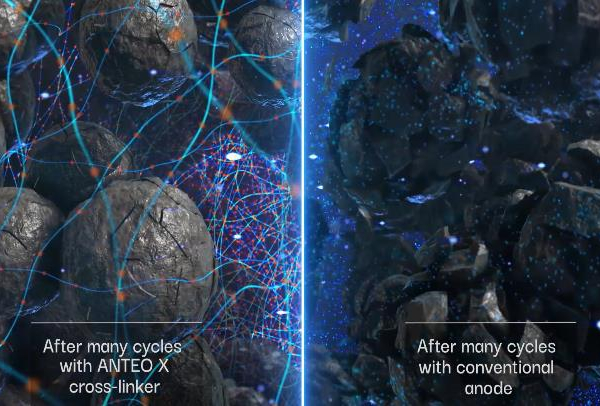High-capacity long-life battery storage is fundamental to the renewable energy sector.
But a severe shortfall of graphite is causing headaches for electric vehicle makers and puts the uptake of EVs at risk.
Graphite is a primary component of lithium-ion batteries, making up almost half of standard lithium-ion batteries and 95% of a battery’s anode, but the battery material faces a 700,000-tonne deficit by 2030.
Battery makers are looking for alternatives, and one option — that also drives much higher performance — is silicon.
I recently spoke to David Radford, CEO of clean energy technology and life science company, AnteoTech Ltd who explained that the anode is the last bastion of optimisation of these batteries.
AnteoTech, which trades on the ASX under the code “ADO”, has developed a proprietary battery additive, “Anteo XTM”, that allows for a battery’s anode to have much higher silicon content, cutting the amount of graphite needed.
Increasing the amount of silicon in an anode isn’t just a way to wean off graphite: silicon stores close to 10 times more lithium ions by weight and three times more lithium ions by volume compared to graphite. This increases battery capacity and cuts charging times, all while lowering costs.
David says the technology can deliver up to a 35% improvement in energy capacity compared to current high energy battery cells. Higher silicon content also means you can make a much thinner anode. Considering the direct correlation between charge time and anode thickness, the thinner the anode, the faster the charging time.
David says AnteoTech’s technology can cut charging times. That means for an EV you could gain 30% more range and significantly reduce your charging time.
The challenge with silicone
Lithium-ion batteries currently hold just 5-10% silicon, despite it being a much lighter product than graphite and holding more lithium ions per gram.
The problem is that when an electric current is run through silicon it expands, causing stress and strain on the silicon particles and eventually leading the anode to break apart. You can see this when your mobile phone battery is on the way out — it won’t hold the charge because chemical bonds between the molecules are breaking down.
The challenge in increasing silicon content is that as you put electric current through silicon it expands.
Every battery has a binder to hold the graphite and the silicon intact, but with more silicon content, you get greater expansion so that existing binder technologies don’t work. Because silicon can expand by around 280% in volume on each charge there needs to be a high-performance cross-linking binder.
Anteo XTM: a solution
AnteoTech’s Anteo XTM additive reinforces battery binders and helps maximise the performance of silicon containing anodes. It increases capacity, stopping the destruction of the anode and extending its cycle life, thus enabling lighter and more compact high energy lithium-ion batteries to be manufactured.
Importantly, Anteo XTM is a water-based technology that doesn’t use any organic solvents. Considering the potential for contamination of the working environment with solvent based products, Anteo XTM is very easy to use, it’s benign. And because it’s water-based, it doesn’t require high temperature processing, in the anode manufacturing process.
Plus, the technology can be added to existing manufacturing processes and nothing needs to be changed when manufacturing an anode. It’s a plug in and play type product where it just needs to be dropped in.
International partnerships
The company has signed MoUs with companies internationally that it is now working to convert to commercial agreements. One of these is with specialty chemical company, Trinseo, which is ex-Dow Chemical, where the parties will combine Anteo XTM with Trinseo’s VOLTABOND™ range aiming to create the leading latex binder for silicon containing anodes.
Another MoU is with Switzerland-based Wyon, which manufactures batteries for the cochlear ear implant, to commercialise silicon anodes for micro batteries. AnteoTech is aiming to revolutionise the way medical devices are powered, as David explains, “if we can give a 30% increase in charge , you can make batteries smaller and lighter for the same charge as today, or you can keep the batteries the same size and get 30% more charge. From a patient perspective they’re much better off.”
First production soon
The company is now in the throes of building its first pilot production plant in Brisbane. David expects that from January that plant will have the capacity to produce an initial 20,000 litres of Anteo XTM per annum — enough for 6,500 Tesla batteries. As demand builds the plant can then produce up to 80,000 litres, or enough to supply 26,000 car batteries.

